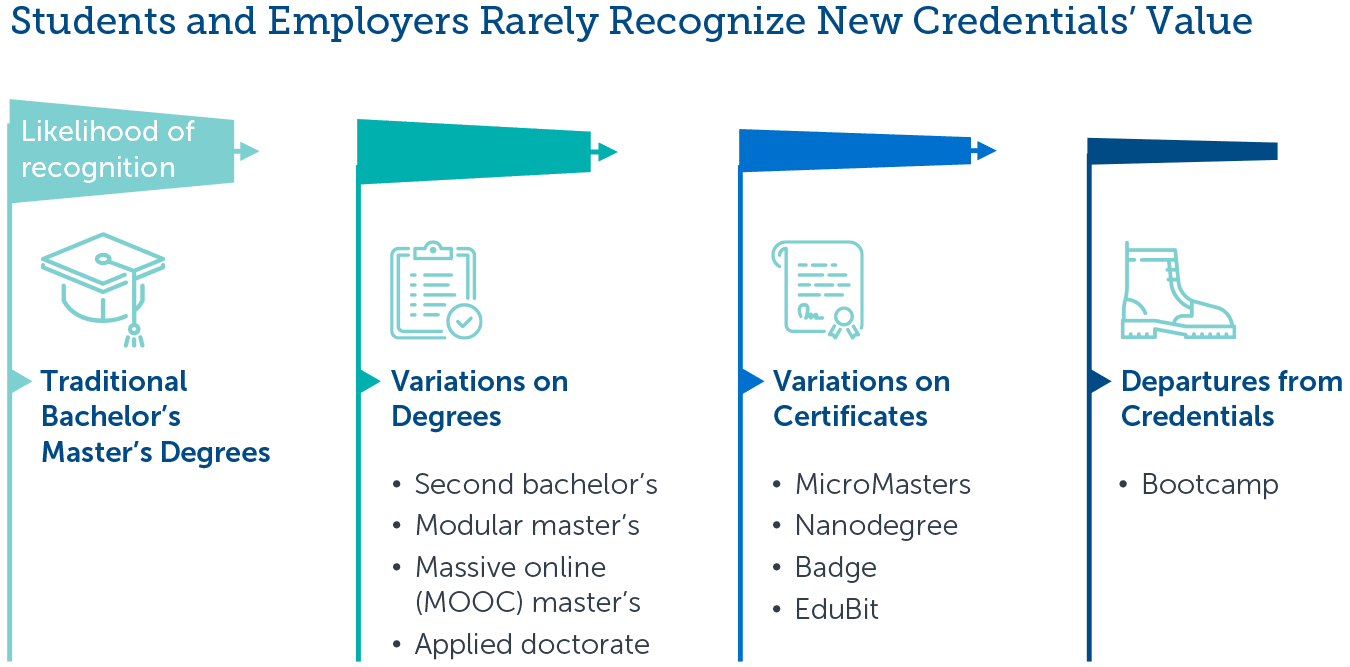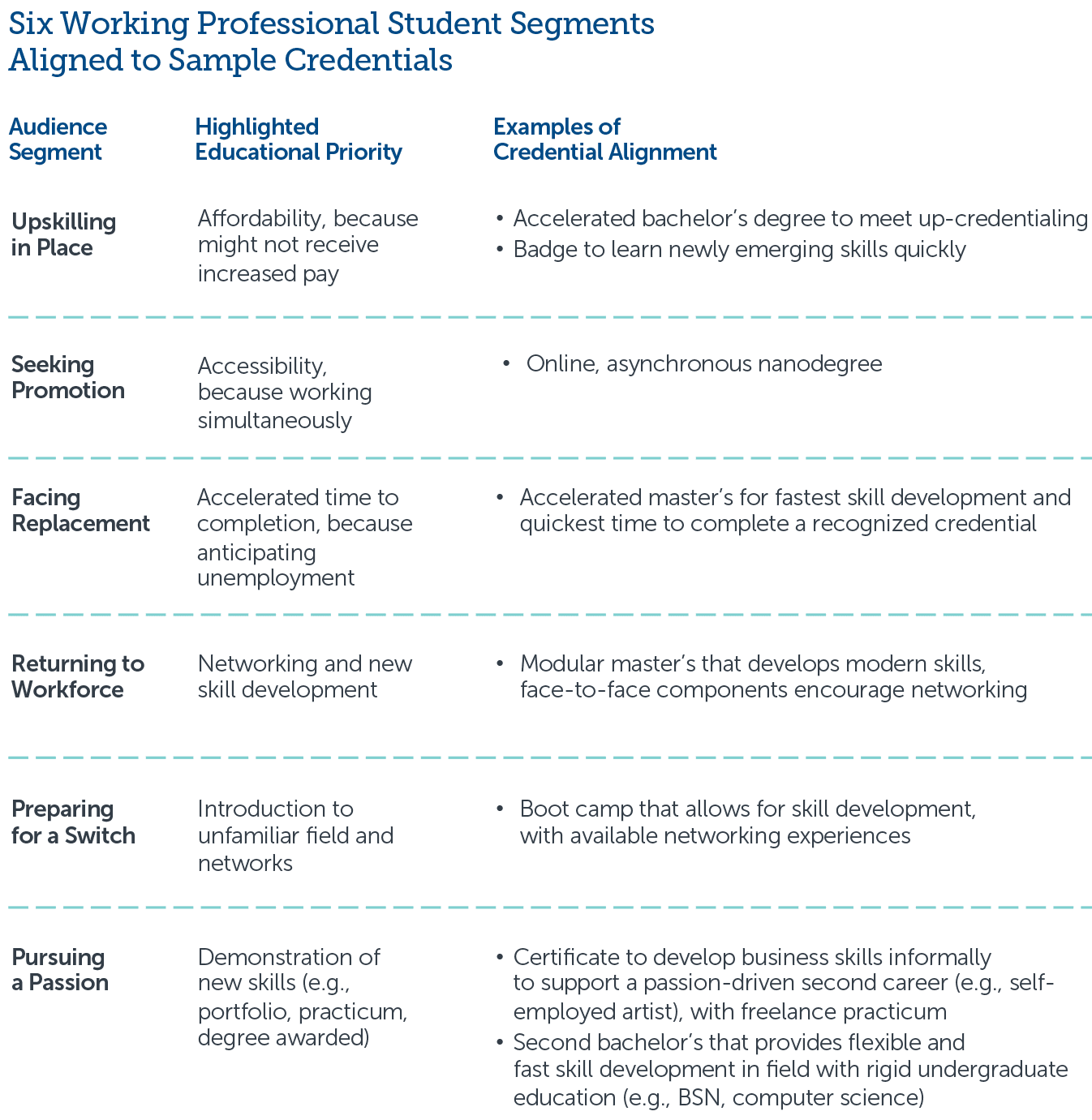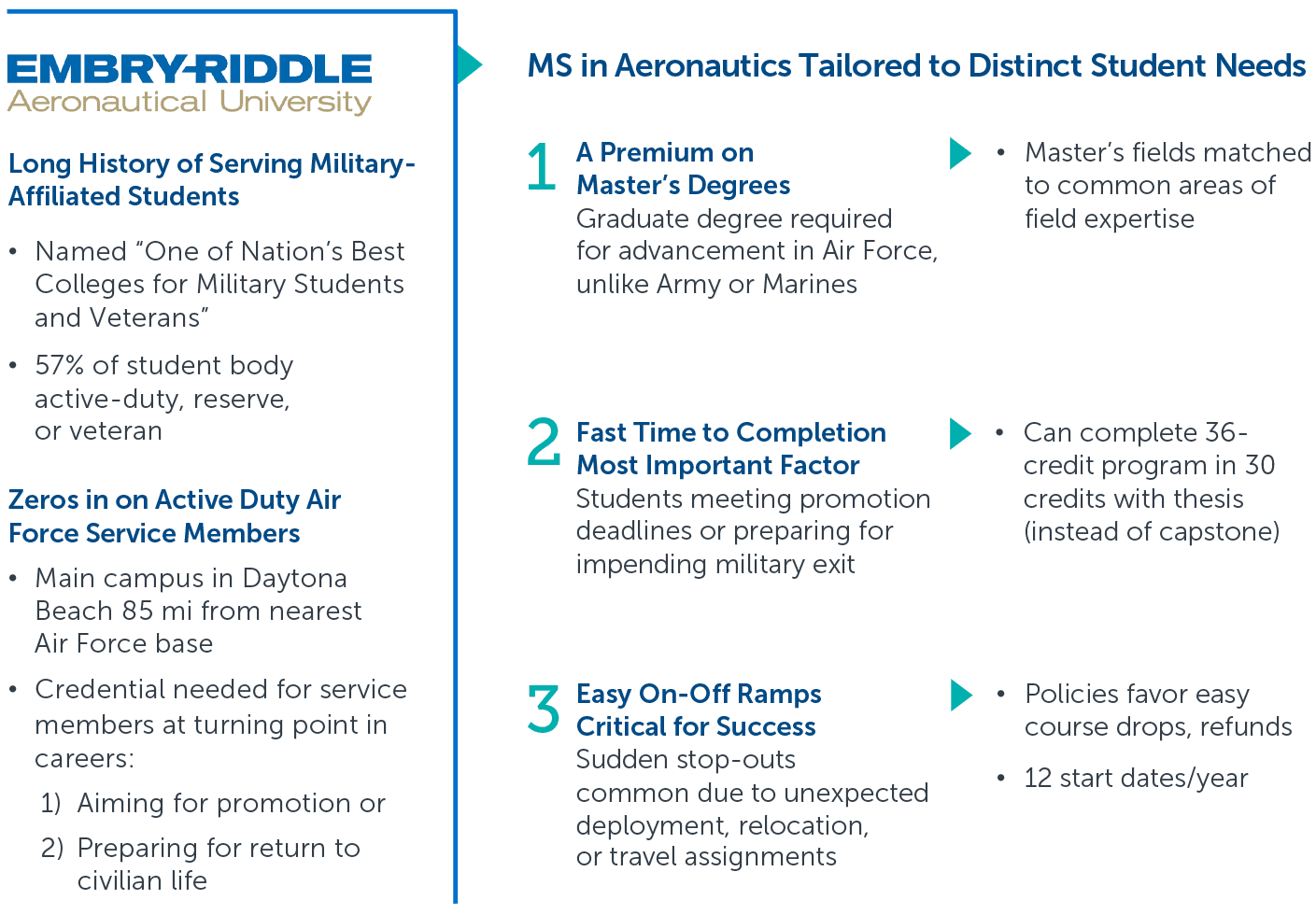Design Credentials to Meet Adult Student Needs
Rather than choose a credential to launch and hope to find an audience, first determine the audience a program will serve and then build the offering to meet their needs. Too often campus stakeholders chase innovative-sounding credentials like badges or micro-degrees; however, students and employers don’t understand what these non-degree credentials mean. Student-centric, versus credential-centric design, ensures the offering matches the audience’s needs.

Teach campus leaders about alternative credentials’ value
Non-degree credentials receive different names, but most ultimately provide the same value: fast and focused education and training. Adult learners and employers can rarely define or distinguish between new non-degree credentials. Skill development matters to these adult learners and their employers, not the item recognizing it.
Exceptions to employers’ and students’ focus on skills over credentials exist where non-degree certifications achieve industry standard, like Project Management Professional certification and certain information technology credentials (e.g., CompTIA certifications, Cisco Certified Networking Administrator certification). Fields like health care and education also value and require credential attainment, often inherent within licensure qualifications.


Prioritize one of six working professional student segments in program design
Programs must recognize and serve working adult learners as distinct subpopulations, rather than as a singular audience. Different career goals dictate what different adult learners will value in a program. Universally recognized degrees can signal, among many things, a commitment to career advancement.
Many adult students, however, increasingly prioritize career-focused skill acquisition and short time commitment over the importance of a specific credential’s familiarity. Critically consider who your program will serve, and what they will most value in their education.



Frame program design discussions around chosen student segment’s needs
Adult-serving programs designed around market needs are more likely to succeed than those designed around academic norms and preferences. To collect input on student and employer needs, consult campus resources like enrollment and marketing staff and industry advisory boards, and thoroughly review competitor program websites. Gather audience intelligence to inform program design choices like modality, length, and price.

Now that you’ve designed your own credential

This resource requires EAB partnership access to view.
Access the roadmap
Learn how you can get access to this resource as well as hands-on support from our experts through Professional and Adult Education Advisory Services.
Learn More